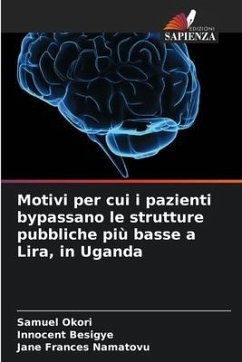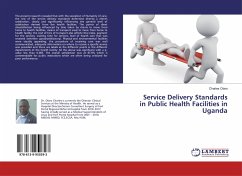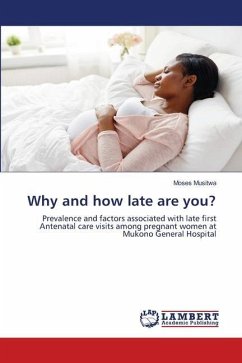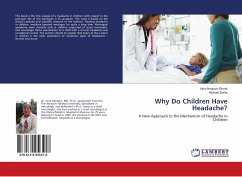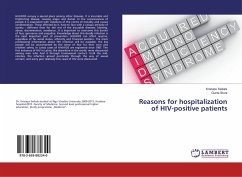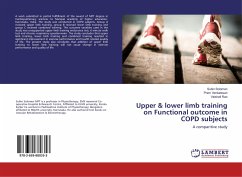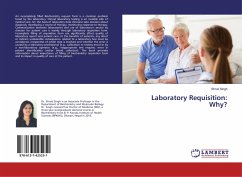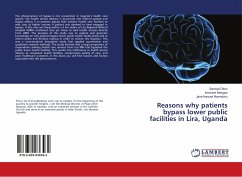
Reasons why patients bypass lower public facilities in Lira, Uganda
Versandkostenfrei!
Versandfertig in 6-10 Tagen
17,99 €
inkl. MwSt.

PAYBACK Punkte
9 °P sammeln!
The phenomenon of bypass is not uncommon in Uganda's health care system. The health service delivery is structured into referral systems and bypass affects it as patients bypass their primary health care facilities to seek care at higher centres. A patient was deemed to have engaged in bypass, if s/he was not living within a 5 km radius of Lira Regional Referral Hospital (LRRH) catchment area yet chose to seek health services directly from LRRH. The purpose of this study was to explore and generate knowledge on why patients bypass lower public health facility levels and to inform policy and de...
The phenomenon of bypass is not uncommon in Uganda's health care system. The health service delivery is structured into referral systems and bypass affects it as patients bypass their primary health care facilities to seek care at higher centres. A patient was deemed to have engaged in bypass, if s/he was not living within a 5 km radius of Lira Regional Referral Hospital (LRRH) catchment area yet chose to seek health services directly from LRRH. The purpose of this study was to explore and generate knowledge on why patients bypass lower public health facility levels and to inform policy and decision making in order to reverse this situation. This was a cross-sectional descriptive study that applied quantitative and qualitative research methods. The study showed that a large proportion of respondents seeking health care services from Lira RRH had bypassed the public lower health facilities. This results into inefficiency in health service delivery at congested health facilities, compromises quality of care, and poor healthcare outcomes. In this book you will find reasons and factors associated with this phenomenon.




